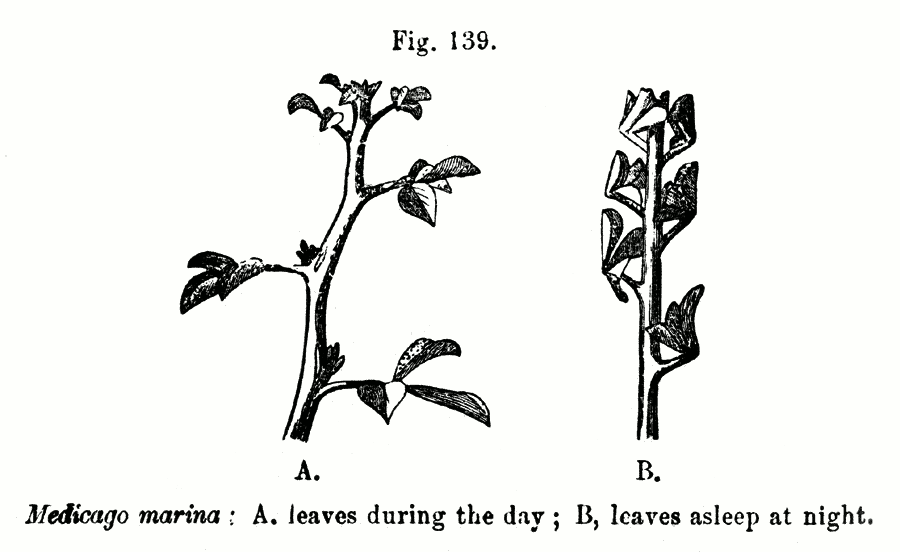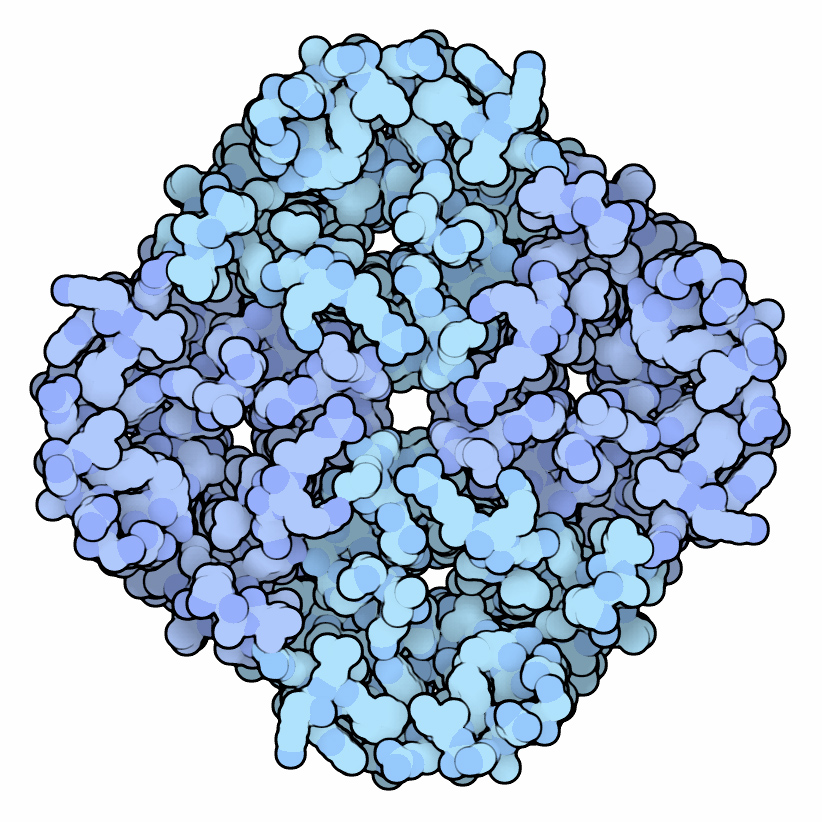|
Pulvinus
A pulvinus (pl. ''pulvini'') is a joint-like thickening at the base of a plant leaf or leaflet that facilitates growth-independent movement. Pulvini are common, for example, in members of the bean family Fabaceae (Leguminosae) and the prayer plant family Marantaceae. Pulvini may be present at the base of the Petiole (botany), leaf stalk or on its other end (Apex (leaf), apex), where the leaf is attached, or in a compound leaf at the place where the leaflets are joined to its Rachis#In botany, middle stem. They consist of a core of vascular tissue within a flexible, bulky cylinder of thin-walled Ground tissue#Parenchyma, parenchyma cells. A pulvinus is also sometimes called a geniculum (meaning a knee-like structure in Latin). Pulvinar movement is caused by changes in turgor pressure leading to a contraction or expansion of the parenchyma tissue. The response is initiated when sucrose is unloaded from the phloem into the apoplast. The increased sugar concentration in the apoplast d ... [...More Info...] [...Related Items...] OR: [Wikipedia] [Google] [Baidu] |
Thigmonasty
Thigmonasty or seismonasty is the nastic movement, nastic response of a plant or fungus to touch or vibration. Conspicuous examples of thigmonasty include many species in the Fabaceae, leguminous family (biology), subfamily Mimosoideae, active carnivorous plants such as Dionaea (plant), Dionaea and a wide range of pollination mechanisms. Distinctive aspects Thigmonasty differs from thigmotropism in that nastic motion is independent of the direction of the stimulus. For example, tendrils from a climbing plant are thigmotropic because they twine around any support they touch, responding in whichever direction the stimulus came from. However, the shutting of a venus fly trap is thigmonastic; no matter what the direction of the stimulus, the trap simply shuts (and later possibly opens). The time scales of thigmonastic responses tend to be shorter than those of thigmotropic movements because many examples of thigmonasty depend on pre-accumulated turgor or on Bistability, bistable mec ... [...More Info...] [...Related Items...] OR: [Wikipedia] [Google] [Baidu] |
Mimosa Pudica
''Mimosa pudica'' (from la, pudica "shy, bashful or shrinking"; also called sensitive plant, sleepy plant, action plant, touch-me-not, shameplant) is a creeping annual or perennial flowering plant of the pea/legume family Fabaceae. It is often grown for its curiosity value: the compound leaves fold inward and droop when touched or shaken, defending themselves from harm, and re-open a few minutes later. In the UK it has gained the Royal Horticultural Society's Award of Garden Merit. The species is native to the Caribbean and South and Central America, but is now a pantropical weed, and can now be found in the Southern United States, South Asia, East Asia, Micronesia, Australia, South Africa, and West Africa as well. It is not shade-tolerant and is primarily found on soils with low nutrient concentrations. ''Mimosa pudica'' is well known for its rapid plant movement. Like a number of other plant species, it undergoes changes in leaf orientation termed "sleep" or nyctinastic moveme ... [...More Info...] [...Related Items...] OR: [Wikipedia] [Google] [Baidu] |
Nyctinasty
Nyctinasty is the circadian rhythmic nastic movement of higher plants in response to the onset of darkness, or a plant "sleeping". Nyctinastic movements are associated with diurnal light and temperature changes and controlled by the circadian clock. It has been argued that for plants that display foliar nyctinasty, it is a crucial mechanism for survival; however, most plants do not exhibit any nyctinastic movements. Nyctinasty is found in a range of plant species and across xeric, mesic, and aquatic environments, suggesting that this singular behavior may serve a variety of evolutionary benefits. Examples are the closing of the petals of a flower at dusk and the sleep movements of the leaves of many legumes. Physiology Plants use phytochrome to detect red and far red light. Depending on which kind of light is absorbed, the protein can switch between a Pr state that absorbs red light and a Pfr state that absorbs far red light. Red light converts Pr to Pfr and far red light convert ... [...More Info...] [...Related Items...] OR: [Wikipedia] [Google] [Baidu] |
Turgor
Turgor pressure is the force within the cell that pushes the plasma membrane against the cell wall. It is also called ''hydrostatic pressure'', and is defined as the pressure in a fluid measured at a certain point within itself when at equilibrium. Generally, turgor pressure is caused by the osmotic flow of water and occurs in plants, fungi, and bacteria. The phenomenon is also observed in protists that have cell walls. This system is not seen in animal cells, as the absence of a cell wall would cause the cell to lyse when under too much pressure. The pressure exerted by the osmotic flow of water is called turgidity. It is caused by the osmotic flow of water through a selectively permeable membrane. Movement of water through a semipermeable membrane from a volume with a low solute concentration to one with a higher solute concentration is called osmotic flow. In plants, this entails the water moving from the low concentration solute outside the cell into the cell's vacuole. Mech ... [...More Info...] [...Related Items...] OR: [Wikipedia] [Google] [Baidu] |
Petiole (botany)
In botany, the petiole () is the stalk that attaches the leaf blade to the stem, and is able to twist the leaf to face the sun. This gives a characteristic foliage arrangement to the plant. Outgrowths appearing on each side of the petiole in some species are called stipules. Leaves with a petiole are said to be petiolate, while leaves lacking a petiole are called sessile or apetiolate. Description The petiole is a stalk that attaches a leaf to the plant stem. In petiolate leaves, the leaf stalk may be long, as in the leaves of celery and rhubarb, or short. When completely absent, the blade attaches directly to the stem and is said to be sessile. Subpetiolate leaves have an extremely short petiole, and may appear sessile. The broomrape family Orobanchaceae is an example of a family in which the leaves are always sessile. In some other plant groups, such as the speedwell genus '' Veronica'', petiolate and sessile leaves may occur in different species. In the grasses (Poaceae), ... [...More Info...] [...Related Items...] OR: [Wikipedia] [Google] [Baidu] |
Fabaceae
The Fabaceae or Leguminosae,International Code of Nomenclature for algae, fungi, and plants. Article 18.5 states: "The following names, of long usage, are treated as validly published: ....Leguminosae (nom. alt.: Fabaceae; type: Faba Mill. Vicia L.; ... When the Papilionaceae are regarded as a family distinct from the remainder of the Leguminosae, the name Papilionaceae is conserved against Leguminosae." English pronunciations are as follows: , and . commonly known as the legume, pea, or bean family, are a large and agriculturally important of |
Marantaceae
The Marantaceae are a family, the arrowroot family, of flowering plants consisting of 31 genera and around 530 species, defining it as one of the most species-rich families in its order.Kennedy, H. (2000). “Diversification in pollination mechanisms in the Marantaceae”. Pp. 335-343 in Monocots: systematics and evolution, eds. K. L. Wilson and D. A. Morrison. Melbourne: CSIROLey, A. C., and Claßen-Bockhoff, R. (2011). “Evolution in African Marantaceae - evidence from phylogenetic, ecological and morphological studies”. Syst. Bot. 36, 277–290. doi: 10.1600/036364411X569480 Species of this family are found in lowland tropical forests of Africa, Asia, and the Americas. The majority (80%) of the species are found in the American tropics, followed by Asian (11%) and African (9%) tropics. They are commonly called the prayer-plant family and are also known for their unique secondary pollination presentation. Description The plants usually have underground rhizomes or tubers. The ... [...More Info...] [...Related Items...] OR: [Wikipedia] [Google] [Baidu] |
Legume
A legume () is a plant in the family Fabaceae (or Leguminosae), or the fruit or seed of such a plant. When used as a dry grain, the seed is also called a pulse. Legumes are grown agriculturally, primarily for human consumption, for livestock forage and silage, and as soil-enhancing green manure. Well-known legumes include beans, soybeans, chickpeas, peanuts, lentils, lupins, mesquite, carob, tamarind, alfalfa, and clover. Legumes produce a botanically unique type of fruit – a simple dry fruit that develops from a simple carpel and usually dehisces (opens along a seam) on two sides. Legumes are notable in that most of them have symbiotic nitrogen-fixing bacteria in structures called root nodules. For that reason, they play a key role in crop rotation. Terminology The term ''pulse'', as used by the United Nations' Food and Agriculture Organization (FAO), is reserved for legume crops harvested solely for the dry seed. This excludes green beans and green peas, which a ... [...More Info...] [...Related Items...] OR: [Wikipedia] [Google] [Baidu] |
Circadian Clock
A circadian clock, or circadian oscillator, is a biochemical oscillator that cycles with a stable phase (waves), phase and is synchronized with solar time. Such a clock's ''in vivo'' period is necessarily almost exactly 24 hours (the earth's current day, solar day). In most living things, internally synchronized circadian clocks make it possible for the organism to anticipate daily environmental changes corresponding with the day–night cycle and adjust its biology and behavior accordingly. The term circadian derives from the Latin ''circa'' (about) ''dies'' (a day), since when taken away from external cues (such as environmental light), they do not run to exactly 24 hours. Clocks in humans in a lab in constant low light, for example, will average about 24.2 hours per day, rather than 24 hours exactly. The normal body clock oscillates with an endogenous period of exactly 24 hours, it Entrainment (chronobiology), entrains, when it receives sufficient daily corrective signals from ... [...More Info...] [...Related Items...] OR: [Wikipedia] [Google] [Baidu] |
Aquaporin
Aquaporins, also called water channels, are channel proteins from a larger family of major intrinsic proteins that form pores in the membrane of biological cells, mainly facilitating transport of water between cells. The cell membranes of a variety of different bacteria, fungi, animal and plant cells contain aquaporins through which water can flow more rapidly into and out of the cell than by diffusing through the phospholipid bilayer. Aquaporins have six membrane-spanning alpha helical domains with both carboxylic and amino terminals on the cytoplasmic side. Two hydrophobic loops contain conserved asparagine- proline-alanine ("NPA motif") which form a barrel surrounding a central pore-like region that contains additional protein density. Because aquaporins are usually always open and are prevalent in just about every cell type, this leads to a misconception that water readily passes through the cell membrane down its concentration gradient. Water can pass through the cell mem ... [...More Info...] [...Related Items...] OR: [Wikipedia] [Google] [Baidu] |
Phytochrome
Phytochromes are a class of photoreceptor in plants, bacteria and fungi used to detect light. They are sensitive to light in the red and far-red region of the visible spectrum and can be classed as either Type I, which are activated by far-red light, or Type II that are activated by red light. Recent advances have suggested that phytochromes also act as temperature sensors, as warmer temperatures enhance their de-activation. All of these factors contribute to the plant's ability to germinate. Phytochromes control many aspects of plant development. They regulate the germination of seeds (photoblasty), the synthesis of chlorophyll, the elongation of seedlings, the size, shape and number and movement of leaves and the timing of flowering in adult plants. Phytochromes are widely expressed across many tissues and developmental stages. Other plant photoreceptors include cryptochromes and phototropins, which respond to blue and ultraviolet-A light and UVR8, which is sensitive to u ... [...More Info...] [...Related Items...] OR: [Wikipedia] [Google] [Baidu] |




